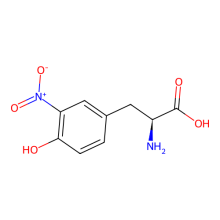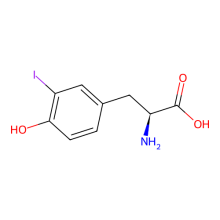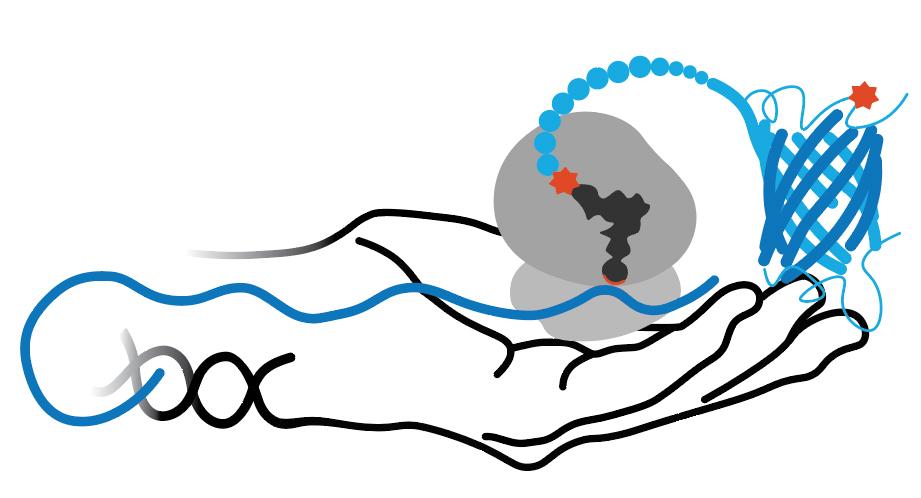RS/tRNA Foundational Publication Support
Avila-Crump, Savanna, Marcus L Hemshorn, Chloe M Jones, Lea Mbengi, Kyle Meyer, Joshua A Griffis, Subhashis Jana, et al. (2022) 2022. “Generating Efficient Pyrrolysyl-Trna Synthetases For Structurally Diverse Non-Canonical Amino Acids.”. Acs Chemical Biology 17 (12): 3458-3469. doi:10.1021/acschembio.2c00639.
RS/tRNA Pair Development Year
2022
ncAA(s) Incorporated
3-nitro-L-tyrosine
ncAA Structure (png, jpg, jpeg)

ncAA Utility
3-nitroTyr is a natural post-translational modification of proteins typically resulting from protein oxidation by peroxynitrite. It increases in many diseases and with age. Still unknown is if it can be reversed (by a denitrase) and if it has has a purposeful signaling role, or if it is only a modification associated with pathologies. It is known in some cases to contribute to disease pathology, but in most cases it is unknown how much it causes pathology vs. being a consequence of pathology. The ability to site specifically and quantitatively place 3-nitroTyr in positions in proteins that have been seen to occur in association with disease is a key tool to answer questions about its possible roles in normal physiology and disease.
3-iodo-L-tyrosine
ncAA Structure (png, jpg, jpeg)

ncAA Utility
for anomalous dispersion phasing in protein crystallography.
RS Organism of Origin
Parent RS
RS Mutations
N166A
V168S
W239R
V168S
W239R
tRNA Organism of Origin
Parent tRNA
tRNA Anticodon
CUA
RS/tRNA Availability
n/a
Used in what cell line?
RS/tRNA Additional Notes
Generated from a proof-of-principle selection to show that the M alvus library used could be a source of diverse RSs. This and multiple other RSs selected in the study had similar activity with 3NY, with MS confirming full-fidelity incorporation. Incorporation into sfGFP(150) in E coli was at a similar level to both the Mb A7 nitroTyr RS and the Mj A7 nitroTyr RS. The UP50 of the D9 RS was ~40 microM and a permissivity study showed that it and some of the other RSs incorporated 3-chloro, 3-bromo, and 3-iodoTyr at even higher levels than 3-nitroTyr. None of the Ma 3NY RSs were tested for their functionality in mammalian cells or used in an application.
